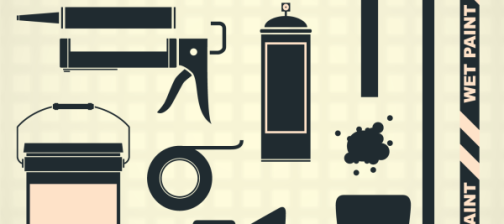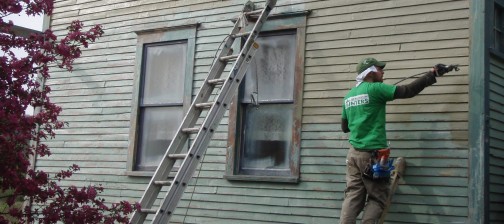Nobody ever wants to end up paying more than they have to for a painting project, or any home improvement project for that matter. It’s something we all have in common for sure. That’s one reason why I generally encourage our customers to get at least 3 bids when they are looking to have a large job done. However, once the bids are in hand, it is very important to give each one thoughtful consideration, and to pay attention to more than just the bottom line. While low bids can be tempting, especially in todays’ economy where home improvement dollars often have to be stretched, there’s way more to getting a good deal and enduring value from a paintjob than just the price.
You see, the painting industry is fairly unique in that specifications for the “same” job can be almost infinitely variable company to company. Number of coats, priming procedures, prep steps, quality of materials and job standards all will likely be somewhat different bid to bid. To make matters more difficult, similar looking specifications can still sometimes be wildly different. One company’s “Prep” specification might include thorough scraping, power-sanding, nailing in loose clapboards, filling, caulking, and fully removing all hardware, while another company’s “Prep” might mean knocking off loose paint chips and going straight to painting. Even if two companies have the same exact specifics (like “scrape, sand, caulk, etc.), they still will likely differ somewhat on the thoroughness of each specific activity. Some companies will scrape every last bit of failing paint they can find, some will scrape just the loose and obvious stuff. Some companies will caulk every crack and gap, and others will only caulk what you’re likely to notice.
Given this broad spectrum of possible specifications for your paintjob, it is easy to understand why you will likely see a broad spectrum of prices when you solicit your bids. This also highlights the fact of the matter; that selecting a painting contractor is less about what it costs and more about what you are actually getting for the price. If you see a bid that is much lower than others, it should be a pretty obvious red flag, as a low bid usually means that the contractor has missed something, or worse. So what are some of the risks of selecting a low bid solely on price? I’ll outline some common situations here:
#1: The contractor could have low quality standards or could be planning on skimping on the specifications. This is the #1 reason for a low bid!! Since painting costs are 80% to 90% Labor, a lower price just plain means that the contractor is planning on putting less labor into your house. This means you might get poor surface prep, lack of thorough priming and caulking, or any number of other shortcuts that save time at the expense of a good paintjob. Shortcuts in painting work will almost invariably lead to ongoing paint failure issues and higher costs down the road, not to mention the hassle of warranty calls, the risk of damage to your home from inadequate protection, and/or just having to deal with a sub-par contractor.
#2: The contractor might not be including everything others are – make sure you check for specifics such as porch spindles, rails & floors, storm panels, window sash, doors, outbuildings, etc. Number of coats and priming specifications should also be clearly specified, with stated upfront costs on additional coats or other add-on items. A low bid could grow much larger if the contractor gets on-site then you realize you need to add a ton of labor/add-ons to get the job you were hoping for.
#3: The contractor could be planning on using a subcontractor or day laborers to complete your job. While this is a common and ethical practice, you must give additional scrutiny to companies that do not do their own actual painting work in-house. It can be hard for a contractor (even with the best intentions) to really guarantee a high quality job if he doesn’t really know the guys who are going to be doing the actual work. Additionally, subcontractors & day-laborers are not technically “employed” by the contractor and as such are not covered by the contractors’ insurance, so low bids could mean the contractor is using uninsured subs or laborers. In any case, it is good due diligence to make sure if your painting contractor will be subbing out your job, that he/she will be using a contractor with which he/she has a good and ongoing relationship. If possible, get references that are specific to the subcontracting company that will be doing your job. You have the right to know who is going to be working on your home, and you don’t want it to be the low-bidding subcontractor of a low-bidding contractor (or worse, some random low-bidding contractor of a high-bidding contractor!)
At the end of the day, you should think of a painting bid not just as an arbitrary price for a homogenous good, but as a promise of total effort (labor) that will be applied to your house and a final product that is specific to the standards of an individual painting company. Armed with the knowledge to thoughtfully compare painting bids (along with checking references & reviews), you should have no problem selecting a company that you can trust to have high standards, provide a great paintjob at a reasonable price, and maximize the long term value of your investment. HINT: Green Mountain Painters is one of those companies!
Green Mountain Painters is the area’s premier painting company – we offer a wide range of painting services, rigorously high quality standards and absolutely top-notch customer service, all at a reasonable price.




